What if the answers to our fundraising struggles are already living in our teams and in our communities? We're sharing some hands-on exercises from our Fundraising Bright Spots Program to help you shift from focusing on 'problem areas' and instead amplify what's already working.
In our Fundraising Bright Spots Program, we’ve partnered with dozens of social justice organizations looking to shift their approach to fundraising from a frustrating and uninspiring “necessary evil” to a creative, collaborative, and values-aligned part of their work.
One of the key questions we explore is how we can learn about and build on what’s already working through the lens of 'bright spots learning' (an idea and approach popularized by Chip and Dan Heath).
In this blog, we’re sharing two tools we use with program participants to spark thinking about your fundraising systems: a fundraising map and a set fundraising bright spots interview questions. The fundraising map is a way to visualize and document the current landscape of fundraising activities at your organization so you can start building a common understanding of what’s working, who’s driving the work, and what important structures and tools are supporting your efforts. The fundraising bright spots interview questions are a guide to learning by getting curious about what’s helping bright spots shine with the goal of amplifying what’s working and replicating those approaches in other places.
Put together, these are great exercises for anyone heavily involved in development work–including, but not limited to, development directors or officers.
Mapping Out Your Fundraising Activities
Draw a “map” of your current fundraising structure and environment. Do your best to document what is actually happening (versus what is aspirational or planned). To get the most out of this activity, have someone else at your organization who’s also involved in development work create their own map and then compare your results.
Think of this map as a living document. As time goes on and you go deeper into conversations around fundraising across your organization (and how those activities can be distributed), your map will change as you analyze your system, adapt new ideas, and try things on.
Start by following these steps to fill out the table below:
Consider all the activities that occur during the year to build stronger relationships and raise money from individuals and institutions.
Create a list of those actions, organized around these categories:
- Identifying prospective supporters
- Cultivation of prospective supporters
- Asking for new support and renewals
- Recognition and thanks
- Stewardship
List any events within these categories based on the function that the event is serving. For example: a house party may be under “asking for new support or renewals”, an open house might be under “identifying prospective supporters”, a gala event may be under “asking” as well as “stewardship.”
|
Category |
|
|---|---|
|
|
|
|
|
|
|
|
|
|
|
|
|
|
|
Once you have named most or all of your activities in a year, grab a big, blank piece of paper and start to map out who is doing what.
If you’re working on this activity with someone else in your organization, each person should create their own map to share and compare perspectives later.
Start by putting your name in a circle. Since you are coordinating and leading much of this work, put your circle in the middle.

2. Add additional circles for other people who are also playing central roles in development. Be specific in listing what activities or actions they are expected to do related to the development categories.
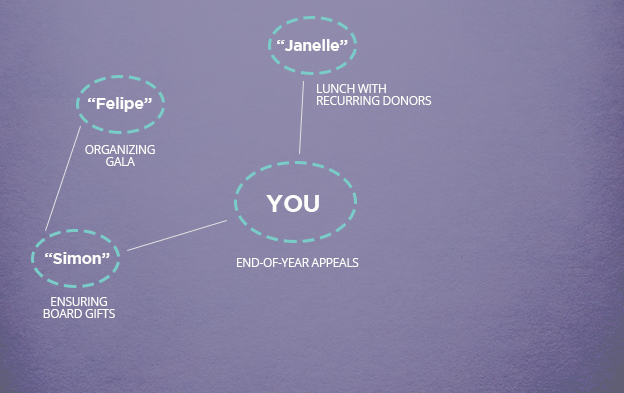
3. Create as many circles as there are people engaged in development efforts (the board may actually be many small circles if different members are doing specific and different actions. Name each individual person if you can (instead of big categories of folks like “program staff”). Remember to add the donors, volunteers, and clients/constituents, and elected officials who have played special roles in any of the activities you listed.
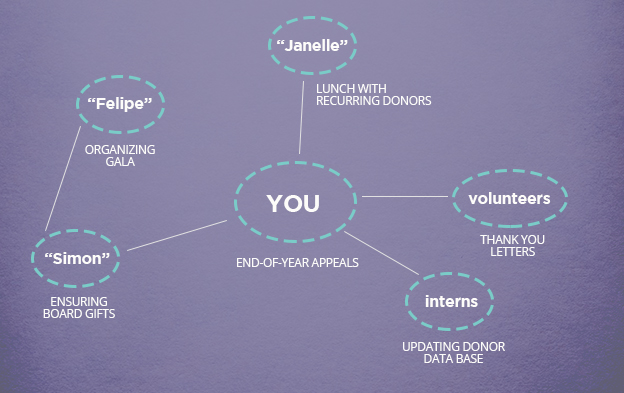
4. Now look at your map. Notice who is named. Ask yourself if each person actually made an effort in the activity or if they are there in name only. Cross out the activities that did not happen.
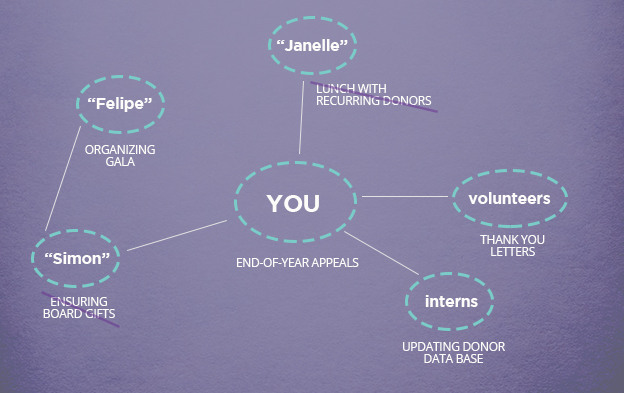
6. Place a positive symbol or a star by the people who are getting most of their activities done. Consider them your “bright spots”. Note next to their name: What did you learn in the last month about how and why they were able to do what they did in fundraising?
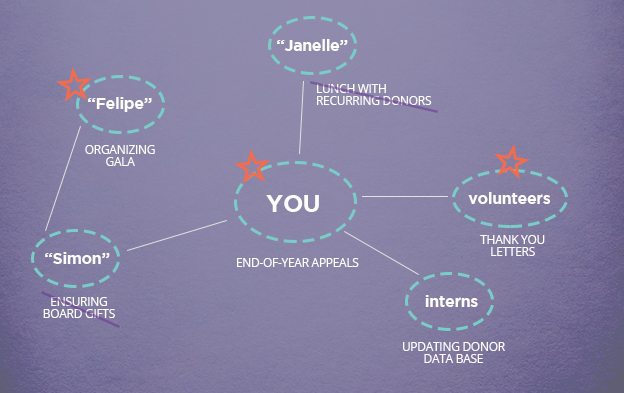
Building on Fundraising Bright Spots
What supports these fundraising bright spots? What ‘systems or tools’ are helping them to fulfill their fundraising functions? Name things like your database, email server, social media platforms, gift recordkeeping, and other processes and put a box around each tool. Connect names of the people who maintain the tools by drawing a line to their circle.
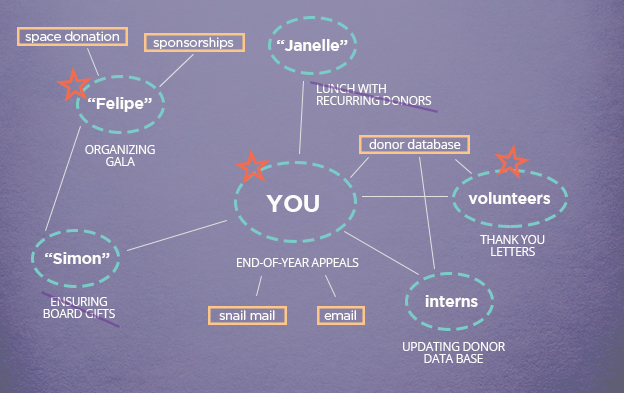
Ask: What allies and opinion makers have helped with your fundraising? (Think advisory council members, elected officials and public agency employees, activists from coalitions who have helped out, etc.)
What else would you include that isn’t represented here?
Compare Your Fundraising Maps
Have someone else at your organization who is also involved in fundraising work follow the steps above to create their own map. Now you can compare maps and ask each other:
- What did each of us emphasize differently?
- Who are the people, activities, and tools (if any) that we see as bright spots?
- What areas are we really covering, and what areas are we really missing?
- What else do your maps tell you?
Instead of Solving Problems, Learn from What is Working
Here’s a chance to start asking: What is working? What are the conditions that make it work? How can we do more of what is working and help fundraising bright spots spread?
Make time to interview some of the folks you identified as fundraising bright spots with a lot of curiosity. Don’t just stop with one question and one response, dig deeper to understand what is creating positive outcomes in more than one person. You can find examples fundraising bright spots interview questions here.
Here’s an example of what you can learn by digging deeper:
“Last month’s phone banking was not very successful. Of the eight board members who were asked to make calls to their list of 30 people, only four board members made phone calls. Only two board members called their entire list. When we asked those two board members how they did it, and what made is possible for them to make all of their calls, here’s what they shared back:
- Both of them put time in their calendars to make the calls
- One of them came to the office to make calls with staff, so they didn’t do it alone. When they listened to some of the staff calls, they became more confident in leaving messages and talking to people.
- One of them was curious to learn why people gave in the past.
- Both of them had just made their own donation.
We used our learning from our bright spots interview to figure out how to engage the rest of the board. We organized another phone bank, but this time we did it for one hour together during our board meeting and asked board members to make their donation or pledge first. We made calls to most of the list and reached 100% board giving.”
Try it out for yourself and see how you can start growing your team’s collective wisdom about what’s working. You can learn a lot more about fundraising bright spots by downloading Fundraising Bright Spots: Strategies and Inspiration from Social Change Organizations Raising Money From Individual Donors (a report by CompassPoint and Klein and Roth Consulting).
About CompassPoint's Fundraising Bright Spots Program
The Fundraising Bright Spots Program is an eight-month long learning community that has been offered over the last few years in Oakland and Los Angeles. Through the program, over eighty different organizations have experimented with new fundraising practices and structures to distribute fundraising efforts internally (growing shared leadership around development efforts) and align their fundraising efforts with their social justice values. These learning communities have been supported by the California Community Foundation and the Evelyn and Walter Haas Jr. Fund.
If you’d like to know when the next Fundraising Bright Spots program will be offered, make sure you’re signed up for our newsletter here.
Resources:
- Fundraising Bright Spots: Strategies and Inspiration from Social Change Organizations Raising Money From Individual Donors from CompassPoint and Klein and Roth Consulting
- The Fundraising Bright Spots Program from CompassPoint
- Fundraising Bright Spots Interview Questions from CompassPoint
- Reset Fundraising for Good from Haas Jr.


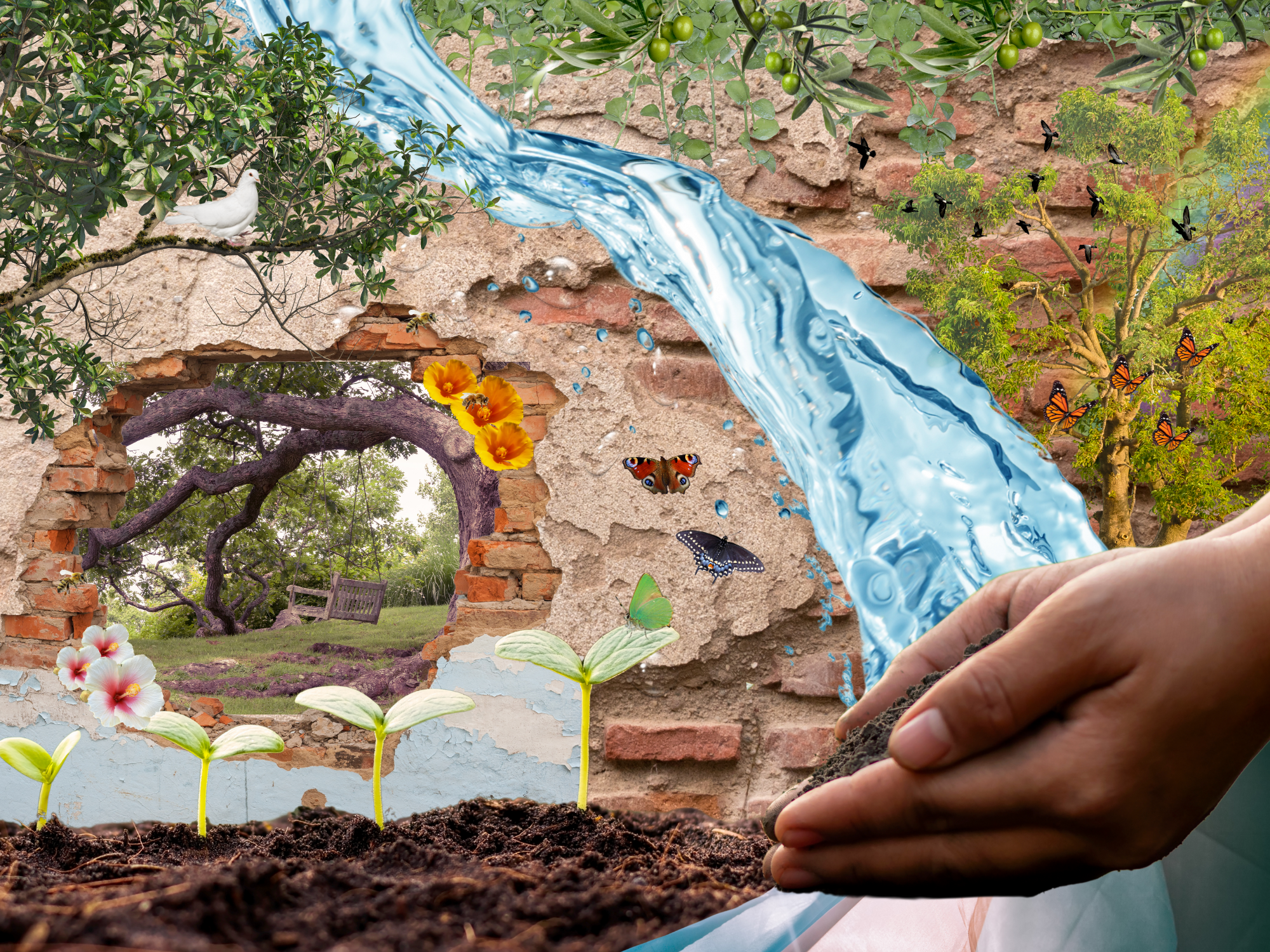
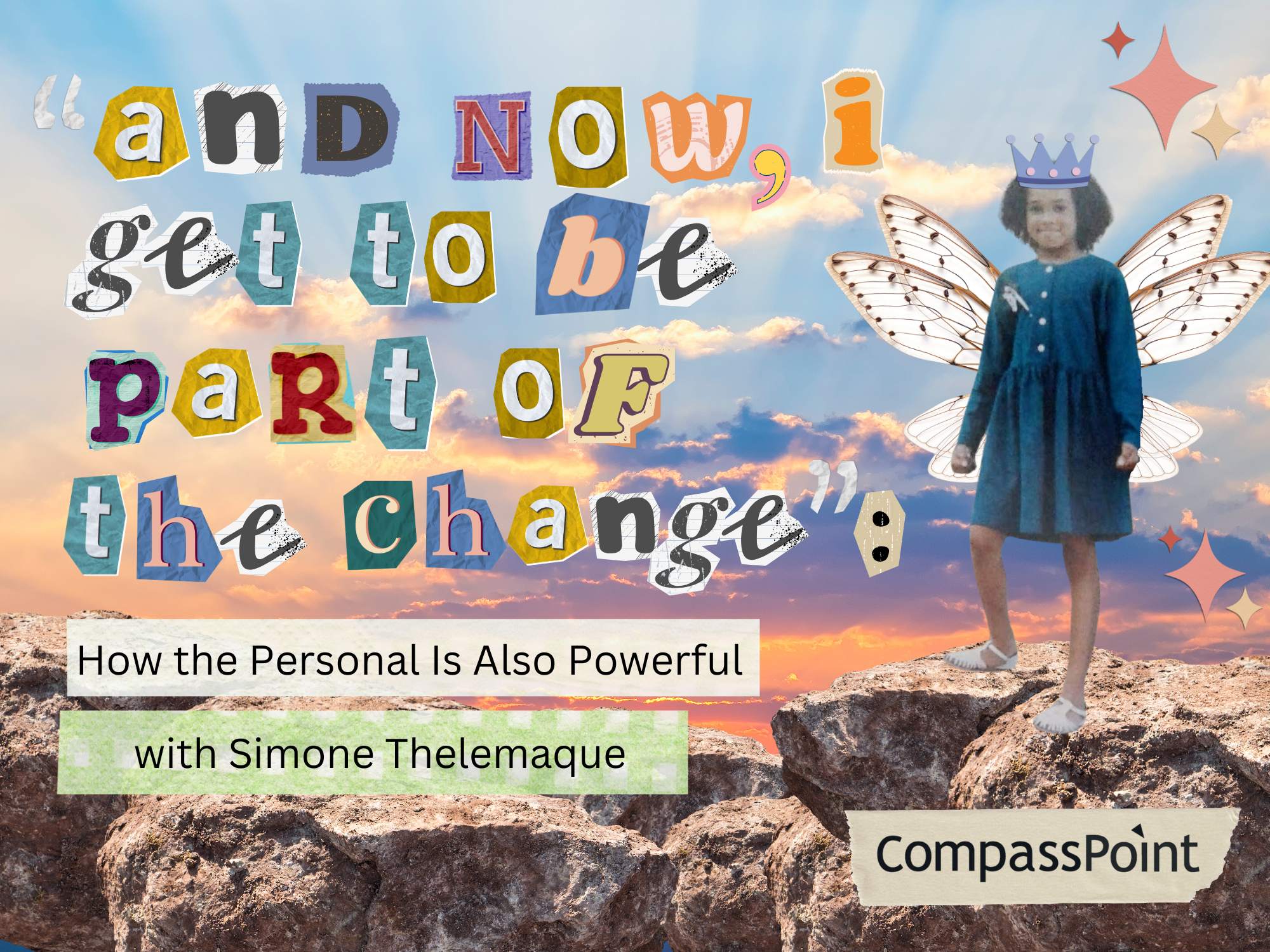

Submit a comment